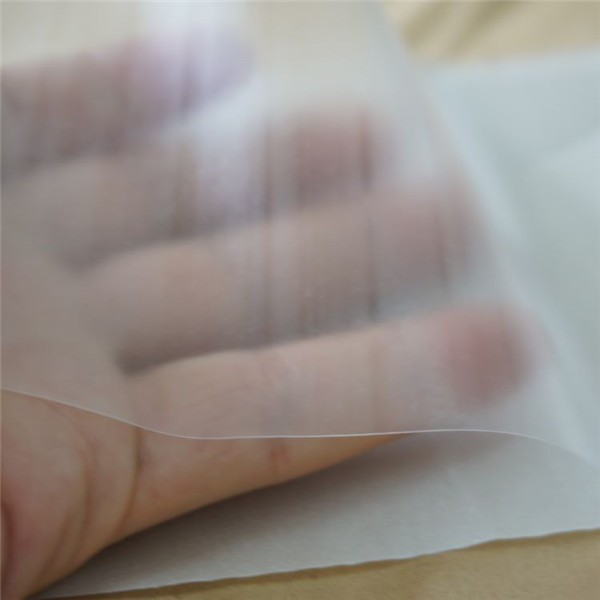Stick of hot melt glue This product is white and opaque, non-toxic, easy to operate, and there is no carbonization phenomenon in continuous use. In addition, there is no eva adhesive film carbonization phenomenon in continuous use. It bonds quickly, has a high strength, is resistant to aging, is non-toxic, has good thermal stability, and has the toughness of a film. Other advantages include the fact that it is non-toxic. After ensuring that the raw materials' weights correspond to the ratio specified in the formula for the hot melt glue stick, add them to the reaction kettle. Adjustments can be made to the rate at which the extruder's output is produced so that it is compatible with the properties of the product that is being made.
The hot melt adhesive is immediately molded into the desired shape as soon as it comes into contact with the cooling water; the glue stick is initially cooled and molded as it passes through the first cooling water tank; after that, it is drawn by the tractor into the second cooling water tank. In the second cooling water tank, the glue sample is molded while simultaneously being completely cooled, and the speed at hot melt adhesive web which the glue stick runs within the water tank is controlled by the speed at which the extruder is operating.
Once the relationship between the extrusion speed, the cooling and setting speed, and the traction speed has been adjusted and controlled, the cooled glue stick must be cut and packed into finished products before moving on to the next step. A quick look at the question of whether or not water leaks can be prevented by using hot melt adhesives. Hot melt adhesives have a wide variety of applications, and in many of those applications, the possibility of water leaks is a concern. Having said that, there are situations in which this is not the case.
Water has an unrivaled ability to move through spaces, bonding web and its pervasiveness can even be approached with its fluidity. In this kind of situation, the hot melt adhesive, in order to stop water from escaping through any gaps or through holes in the material, will need to cover them all up. According to what we have seen, using hot melt adhesive to achieve this result appears to be an extremely challenging task. Is there a way that this issue can be remedied in some fashion?How is it possible for hot melt glue to be so shaky? To put it another way, there is a wide variety of glue available to be used in the process of adhering materials together. However, there is a significant flaw in the rubber products that are so well known in the industry, and that flaw is the fact that they are terrified of water. The reason for this is that the atomic composition of hot melt adhesives can vary greatly, which renders them unsuitable for any practical application. As a result, these adhesives cannot be used.
It can be seen that the shielding ability of hot melt adhesive, based on its own performance, is very weak, and that it is completely changed by external influences. This is because the ability is completely changed by external influences. This is due to the fact that the capability can be completely altered by outside influences.
If, on the other hand, the hot melt adhesive goes through a destructive fusion with the material before it comes into contact with water, then the results will be quite different. The destructive fusion has the potential to make the molecules of the hot melt adhesive and the material intertwined in a large area and not oriented. This will directly destroy the molecular structure of the hot melt collagen that was originally present, significantly reducing or even cutting off the influence of external factors on it, which will cause the outcomes to be quite different.
Use this function to obstruct at the water outlet; there is the possibility of achieving the effect of preventing water leakage, but it requires additional practice in actual operation. In the event that the material cannot be destructively fused with the hot melt adhesive, you should make use of the strong plasticity of the hot melt adhesive. Use this function to obstruct at the water outlet; there is the possibility of achieving this effect; however, it requires additional practice. In addition, if the material cannot be fused destructively with the hot melt adhesive. Make use of this function to obstruct At the water outlet, there is the possibility of achieving the effect of preventing water leakage, but it requires additional practice. Make use of this function to obstruct At the water outlet, there is the possibility of achieving the effect of preventing water leakage, but it requires additional practice.

When you are going through the process of picking out hot melt rubber particles, what kinds of choices are typically presented to you as possibilities to choose from?A change in temperature will cause a change in the chemical properties of the hot-melt glue within a certain temperature range, but the change in temperature will not affect the glue's physical state. The hot-melt glue is completely safe to use and does not have any flavor. Particles made of hot-melt rubber have applications in the packaging of a variety of different industries. Hot-melt rubber particles are put into a hot-melt adhesive machine, where the heat from the machine melts the particles together. Because of its higher viscosity than that of white hot melt adhesive, yellow hot melt adhesive is typically treated on the surface of the object to which it is being adhered. This is the case because yellow hot melt adhesive is used.
Hot melt adhesives are notorious for the lightning-fast application times that they require. About 15 seconds is the maximum amount of time that one is typically able to use hot melt adhesives before they become unusable. The requirements for the amount of time that hot melt adhesives need to work in order to be successful are becoming shorter and shorter as modern production techniques such as assembly lines are used in an increasing number of manufacturing processes. The effects of temperature on hot-melt adhesives can be quite significant. When heated to approximately 260 degrees Fahrenheit, the hot-melt adhesive will start to become liquid and can then be used.





